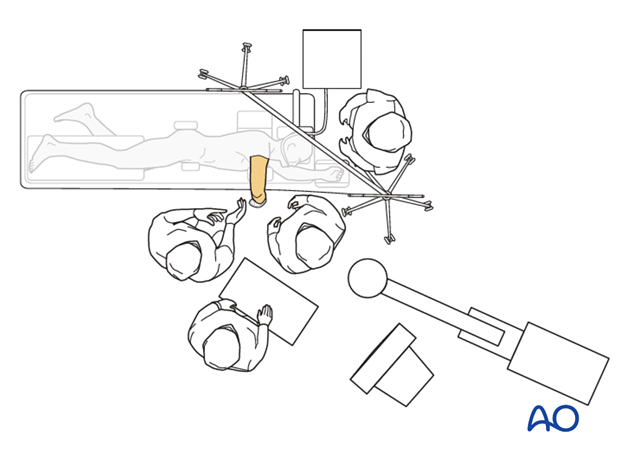Lateral decubitus position
1. Introduction
The lateral decubitus position can be helpful for managing proximal forearm fractures, particularly for large patients or those with concurrent distal humerus fractures.
2. Preoperative preparation
Operating room personnel need to know and confirm:
- Site and side of fracture
- Type of operation planned
- Ensure that operative site has been marked by the surgeon
- Conditions of the soft tissues (fracture open or closed)
- Implants, instrumentation, and equipment required
- Patient positioning
- Details of the patient (including a signed consent form and appropriate antibiotic and thromboprophylaxis)
- Comorbidities, including allergies
3. Anesthesia
This procedure is performed with the patient under general anesthesia.
While technically possible, regional anesthesia is not advised as the procedure can be prolonged.
4. Positioning
Place the patient in lateral decubitus position with the upper arm supported by a padded post.
Make sure the torso is supported in front and back by either a beanbag, or padded posts.
Keep both legs flexed for more stable position. Place a soft cushion under the lateral aspect of the knee to prevent excessive pressure to the peroneal nerve. Place a pillow or soft support between the legs.
To allow adequate access for imaging, position the patient as far as possible toward the side of the table from which the arm will be accessed.
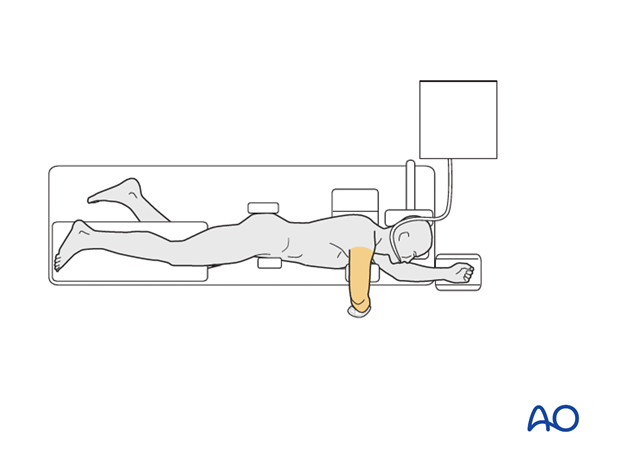
The down arm should not interfere with intraoperative fluoroscopic imaging and be placed in 90 degrees anteflexion of the shoulder and 90 degrees elbow flexion.
Imaging can be performed with plain films or with the use of the image intensifier. Plain films are more appropriate if it is difficult to obtain adequate access with the image intensifier.
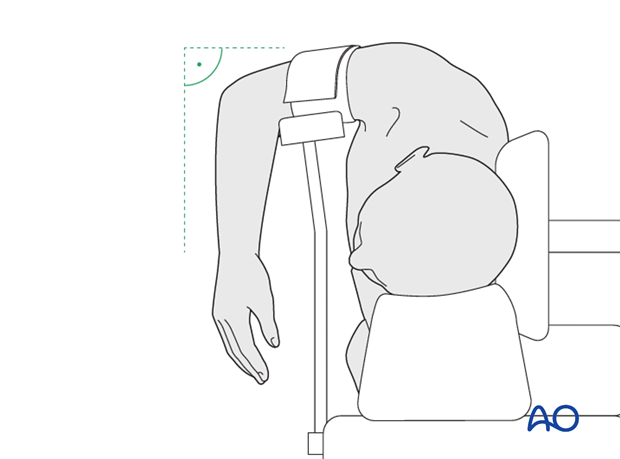
The forearm should be in a position where it can be flexed beyond 100 degrees.
A small padded table can be placed under the forearm to support the elbow in extension when necessary.
Always ensure the anesthetist is satisfied with the position and support of the patient’s face and has adequate access to the airway at all times.
Take great care with the soft tissue and skin pressure points, particularly in the elderly.
If a tourniquet (sterile or nonsterile) is to be used, make sure the cuff is narrow enough that it will not encroach on the surgical field required for exposure.
Ensure there is adequate access for imaging before disinfecting and draping.
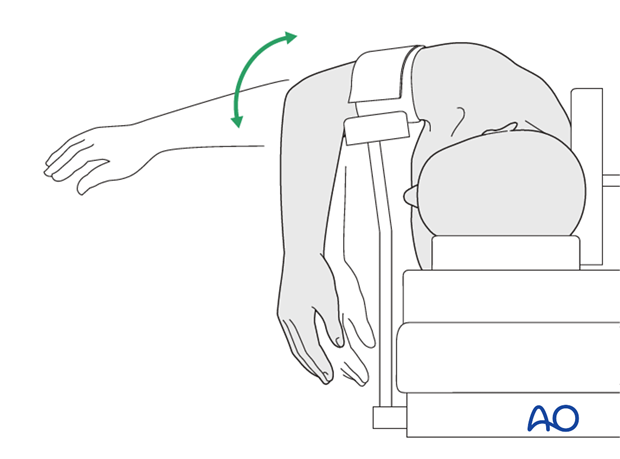
5. Skin disinfecting and draping
During disinfecting and draping make sure the shoulder is not too extended, particularly in elderly patients. It is often useful to elevate the table for this part of the preparation to make it easier for the assistant and then adjust the height to suit the surgeon.
Disinfect the exposed area from the shoulder to the hand including the axilla with the appropriate antiseptic.
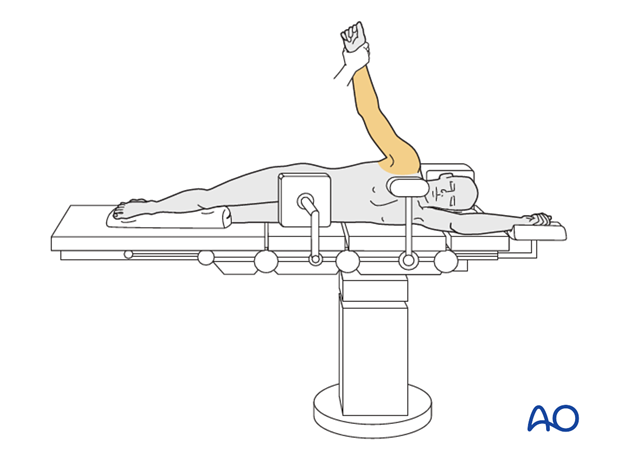
Apply an extremity drape to the affected arm making sure that sufficient coverage is achieved to access the surgical field.
Drape the distal forearm with a stockinette and fix it with a tape.
Drape the image intensifier.
Different imaging positions are usually achieved by rotating the patient’s arm, but at times it is necessary to rotate the image intensifier.

6. Operating room set-up
- The surgeon sits or stands adjacent to the patient’s axilla.
- The assistant sits or stands opposite the surgeon.
- They may need to move to allow the image intensifier access.
- The ORP is positioned directly in line with the arm between the two surgeons.
- The image intensifier is brought in from the head of the table. It is possible on some pedestal radiolucent tables to bring the image intensifier in from the opposite side of the table, so it interferes less with the surgical field.
- Place the image intensifier display screen in full view of the surgical team and the radiographer.
